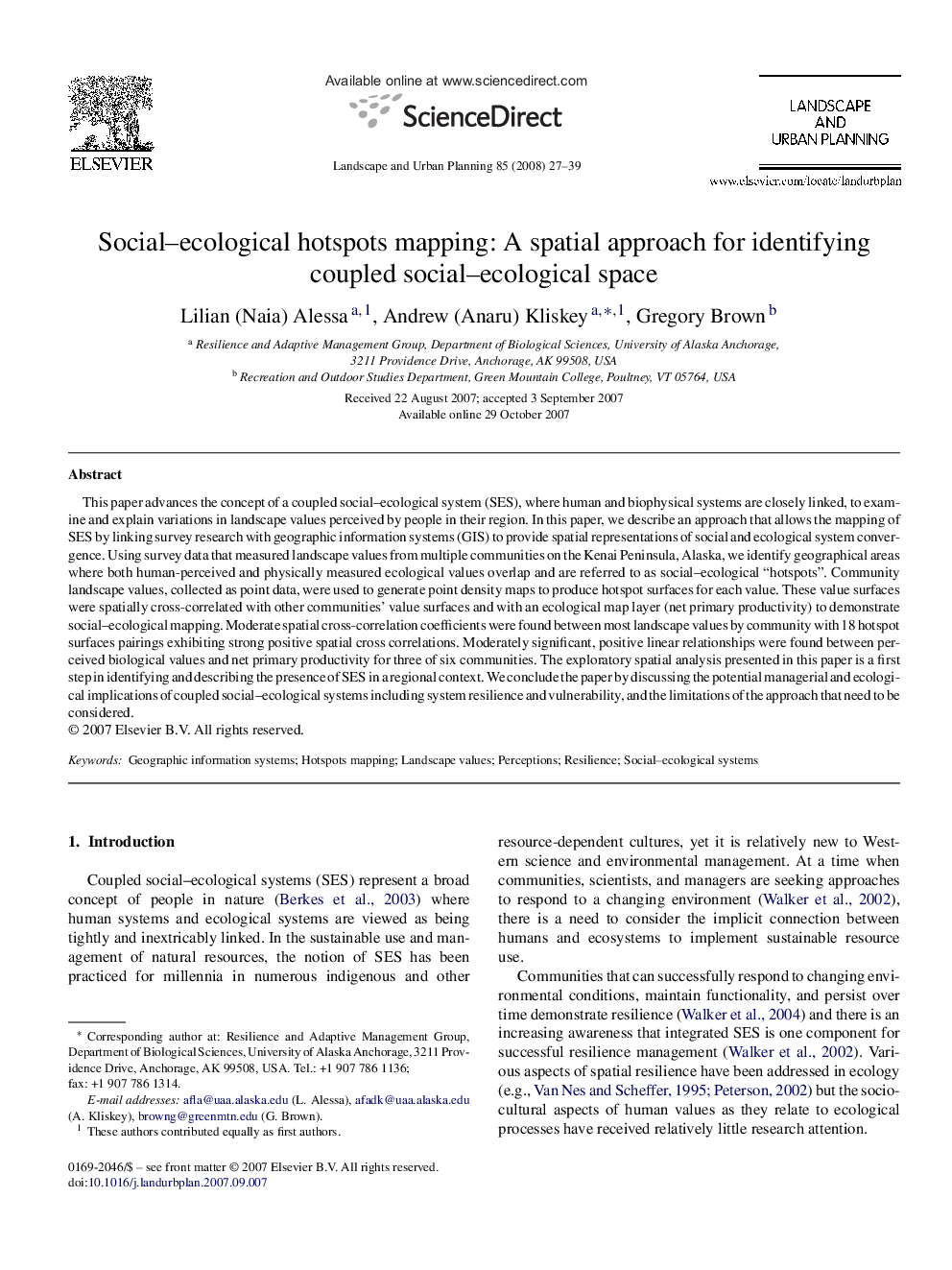| Article ID | Journal | Published Year | Pages | File Type |
|---|---|---|---|---|
| 1050503 | Landscape and Urban Planning | 2008 | 13 Pages |
This paper advances the concept of a coupled social–ecological system (SES), where human and biophysical systems are closely linked, to examine and explain variations in landscape values perceived by people in their region. In this paper, we describe an approach that allows the mapping of SES by linking survey research with geographic information systems (GIS) to provide spatial representations of social and ecological system convergence. Using survey data that measured landscape values from multiple communities on the Kenai Peninsula, Alaska, we identify geographical areas where both human-perceived and physically measured ecological values overlap and are referred to as social–ecological “hotspots”. Community landscape values, collected as point data, were used to generate point density maps to produce hotspot surfaces for each value. These value surfaces were spatially cross-correlated with other communities’ value surfaces and with an ecological map layer (net primary productivity) to demonstrate social–ecological mapping. Moderate spatial cross-correlation coefficients were found between most landscape values by community with 18 hotspot surfaces pairings exhibiting strong positive spatial cross correlations. Moderately significant, positive linear relationships were found between perceived biological values and net primary productivity for three of six communities. The exploratory spatial analysis presented in this paper is a first step in identifying and describing the presence of SES in a regional context. We conclude the paper by discussing the potential managerial and ecological implications of coupled social–ecological systems including system resilience and vulnerability, and the limitations of the approach that need to be considered.
